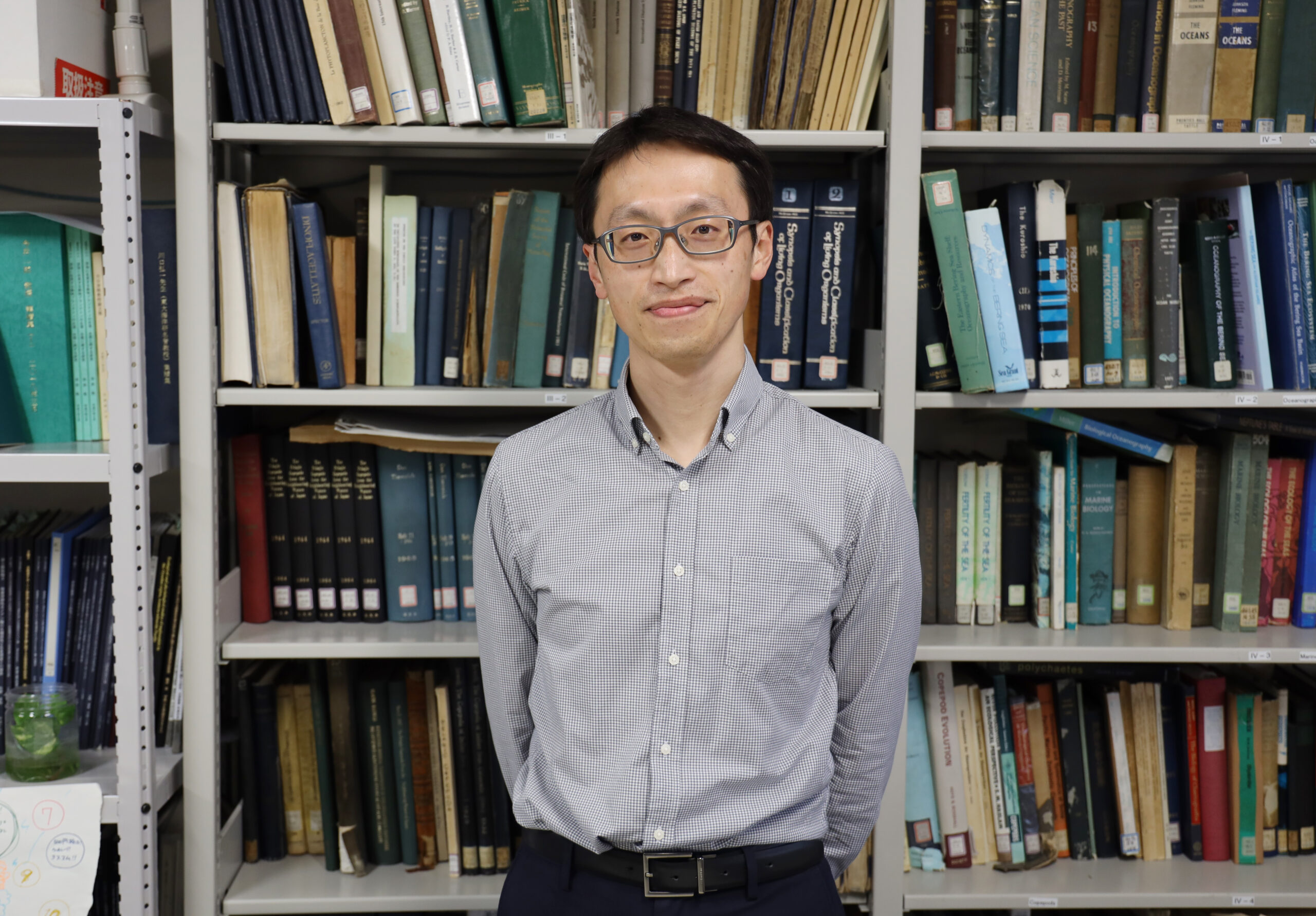This article first appeared in the special feature Understanding the Impact of Climate Change.
15 questions for climate change researcher Dr. Kohei Matsuno (with subtitles)
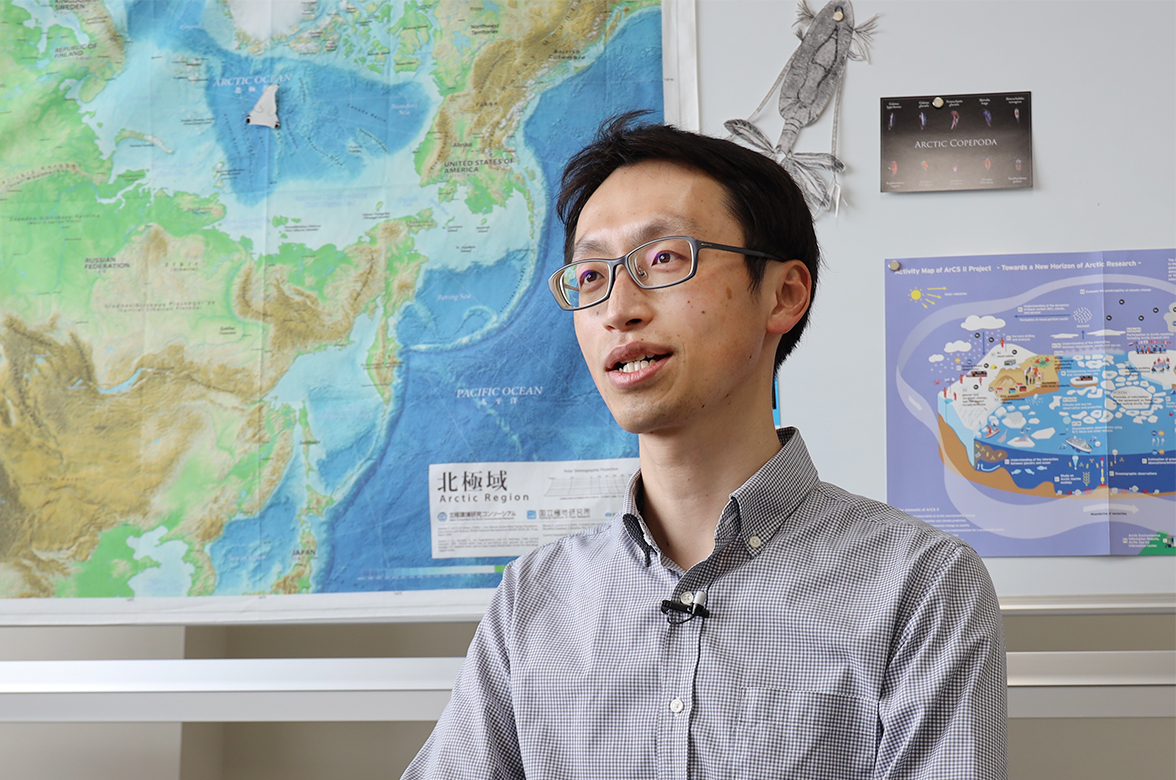
Assistant Professor Kohei Matsuno, Faculty of Fisheries Sciences, Hokkaido University (Photo: Sohail Keegan Pinto)
Marine plankton plays an important role in the food chain, which is said to be undergoing a transformation due to climate change. Assistant Professor Kohei Matsuno of the Faculty of Fisheries Sciences spoke about how climate change is changing the distribution and ecology of marine plankton and what impact this will have on higher-trophic predators, including humans.
The major role of microscopic plankton
My research focuses on the effects of climate change on marine plankton in polar regions such as the Arctic and the Antarctic. Plankton are small, drifting creatures with weak swimming ability, that are basically just swept along by the water. They cannot move against ocean currents like fish, so they are directly affected by changes in ocean currents and the environment caused by climate change. In other words, the effects of climate change on plankton are easily observable.
Another important aspect is the ability of phytoplankton to synthesize organic matter from inorganic matter through photosynthesis. Phytoplankton is then preyed upon by zooplankton, which is in turn preyed upon by fish, which are in turn eaten by higher predators such as birds. The small plankton support the marine ecosystem as primary producers. Beyond that, we humans also feed on marine products, so it can be said that plankton and we are connected.
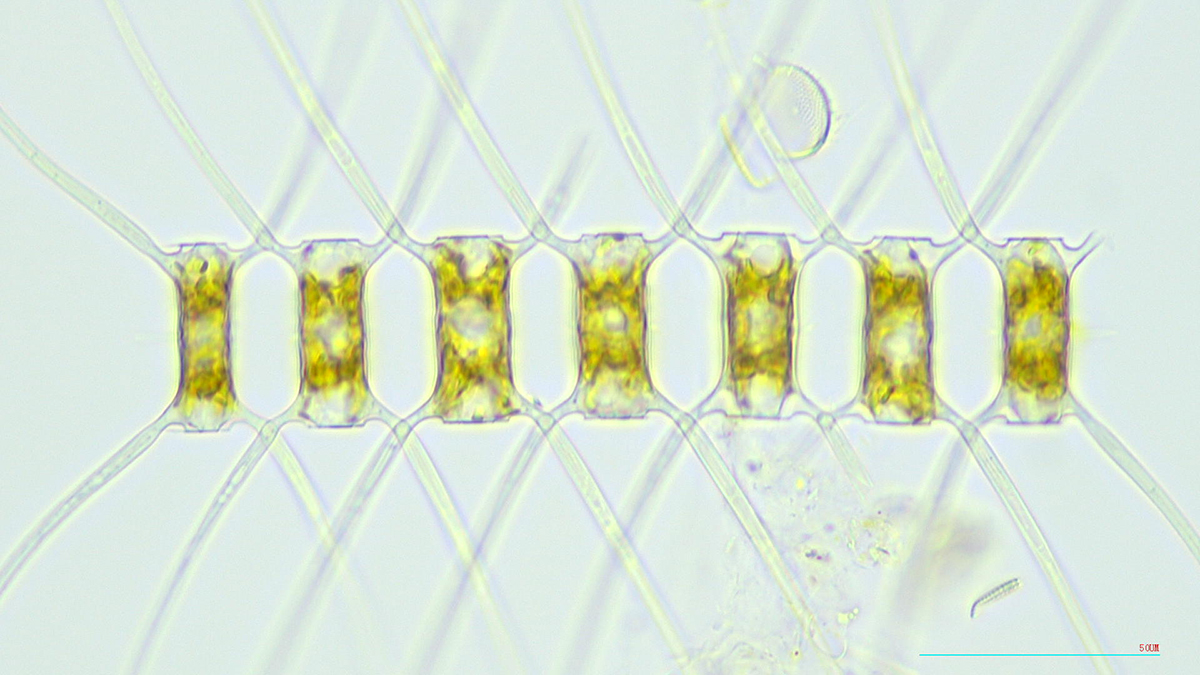
The diatom Chaetoceros atlanticus, a type of marine phytoplankton responsible for primary production in the ocean through photosynthesis. (Photo courtesy of Kohei Matsuno).
Climate change as reflected by plankton
Arctic ice is now rapidly decreasing due to global warming. The reduction of sea ice and the inflow of melting water from glaciers should cause major changes in the marine environment, and we are investigating the effects of such changes on plankton. We actually go to the Arctic Ocean to collect plankton and continually study the number and types of plankton. Currently, satellite observations and mathematical modeling are being actively used for research, but field observations are an essential part of understanding the plankton in the ocean, and fieldwork is what I am best at.

Matsuno conducts research in the Chukchi Sea of the Arctic region and Bering Sea. (Photo: Sohail Keegan Pinto)
My research focuses on the Chukchi Sea, which is a part of the Arctic Ocean close to the Pacific Ocean. In this region, we know that warm water from the Pacific Ocean flows into the Arctic Ocean through the Bering Strait. This flow has strengthened in recent years, and we have found that there is a large influx of zooplankton from the Pacific Ocean into the Chukchi Sea. It has been shown that the increase in zooplankton due to the influx may increase the productivity of predators such as fish, and may also displace endemic plankton species that were originally present in the Arctic Ocean. Our research also showed that copepods, a type of zooplankton, brought from the Pacific Ocean, spawn and hatch in the Arctic Ocean. If the sea ice continues to decrease in the future and the influx of Pacific species increases and becomes established, this could drastically change the local ecosystem, including the impact on seals and polar bears.
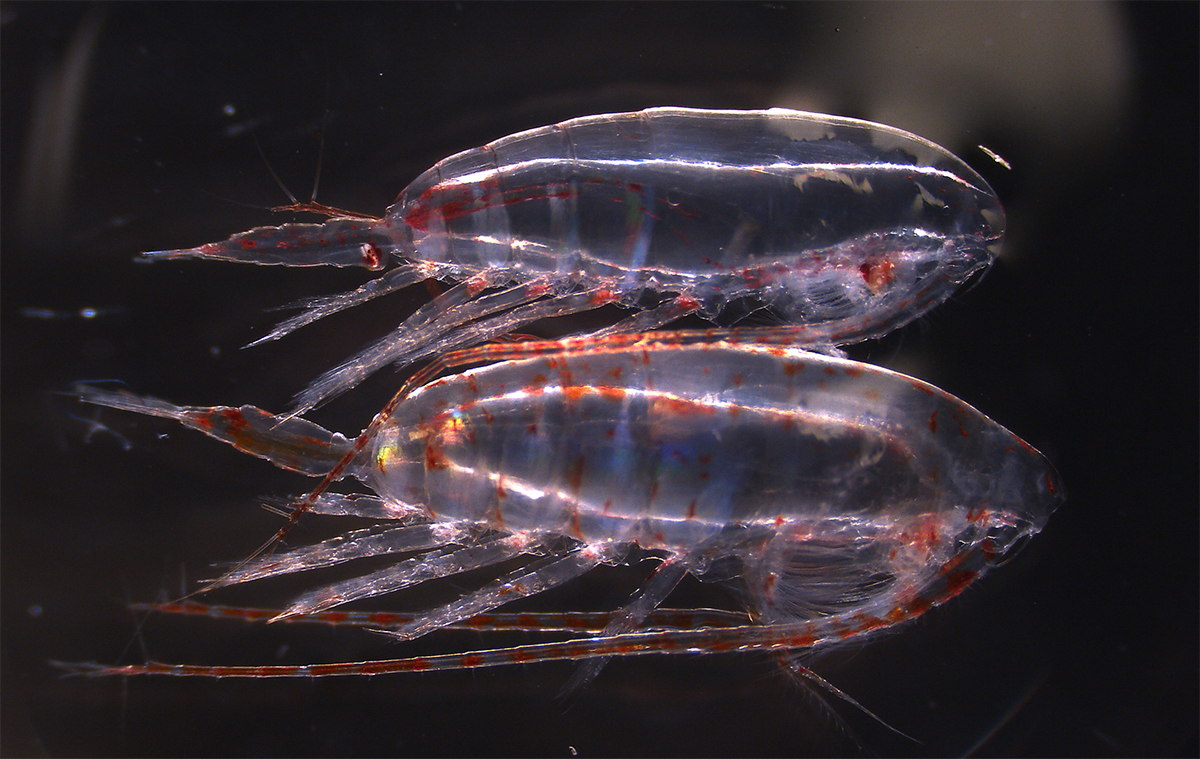
An Arctic copepod (above) and a Pacific copepod (below). Body lengths of about 10 mm. (Photo courtesy of Kohei Matsuno).
Untapped plankton research
In fact, there are few studies on the relationship between climate change and plankton. Plankton research is difficult because you need to go to the field, and if you want to investigate the relationship with climate change, you need to accumulate data over a period of 20 or 30 years, which is time-consuming and very unglamorous research. That is why I find it interesting to work on it, because there are many things that no one has discovered yet.
The situation has only recently become more data-intensive, but it is not easy to see the link with climate change because of the limited data available from the past. Conversely, if we don't study the plankton in the Arctic and the Antarctic now, we won't be able to make comparisons 10 or 20 years from now, so I think it is important that we do our research now.
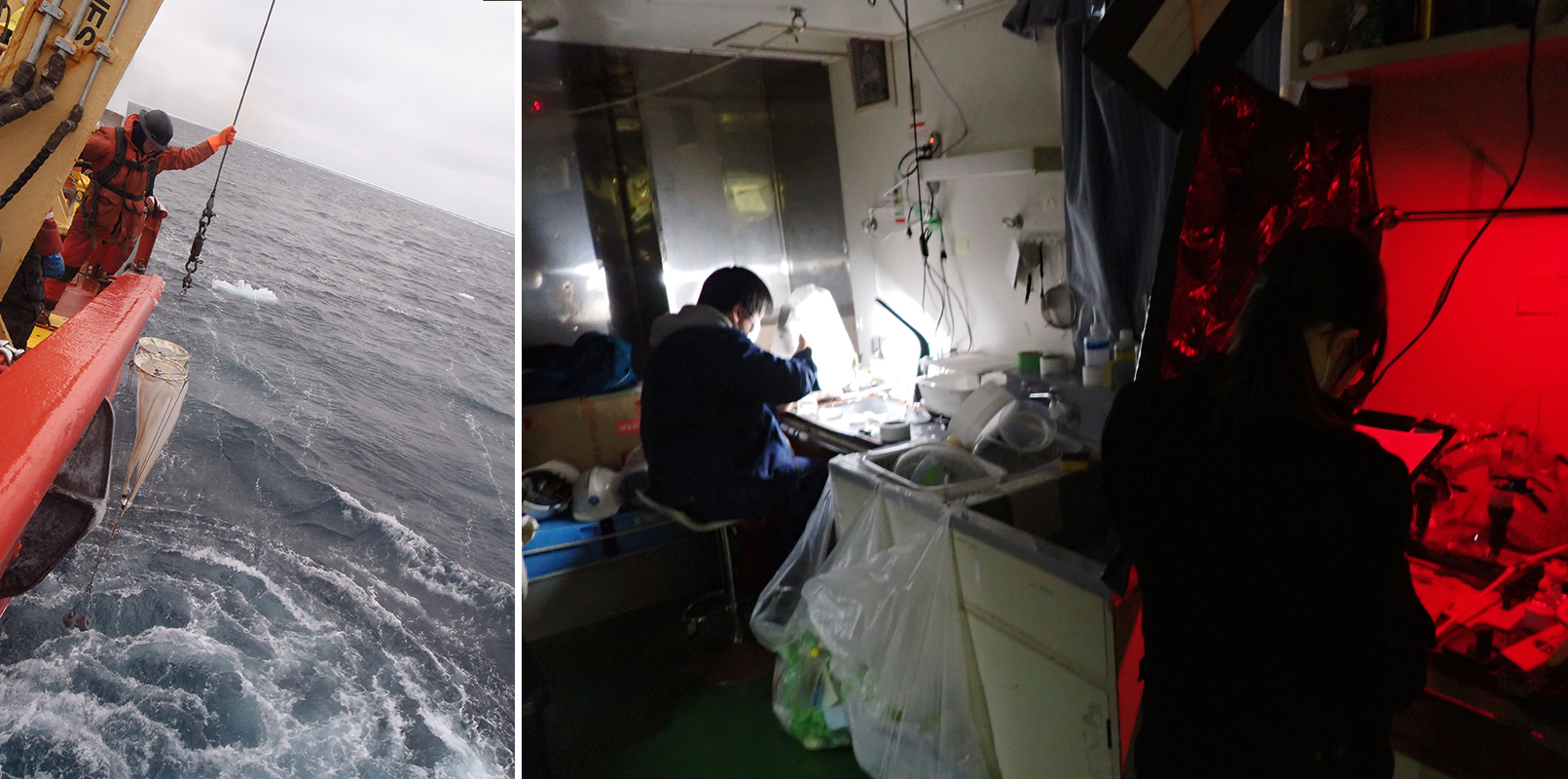
Collecting plankton from a ship in the Arctic Ocean (left). The collected plankton is immediately analyzed on board (right). (Photo courtesy of Kohei Matsuno).
The consequences of earlier sea ice melting
The northern Bering Sea, the gateway to the Arctic Ocean, is rich in plankton and is one of the world's leading fishing grounds for snow crab, king crab, and cod. This area is usually covered by sea ice from December to April each year; however, in spring 2018, the sea ice melted about a month earlier than usual, affecting a wide range of organisms. In particular, fish and birds died, and worse nutritional status was reported. However, it was a mystery why such biological effects occur when sea ice melts earlier.
We were able to unravel part of this mystery based on surveys in the northern Bering Sea carried out in 2017 and 2018 on the Oshoro Maru, a training vessel of the School of Fisheries Sciences at Hokkaido University. In 2018, when the sea ice melted earlier, there was a delay in the onset of the phytoplankton bloom-a massive increase in phytoplankton. Even if the sea ice melts earlier, the bloom is unlikely to occur at that time of year due to inadequate sunlight levels and the environment being more prone to mixing of seawater. As a result of the delayed bloom, it was found that zooplankton, which prey on phytoplankton, laid their eggs later, which also delayed their growth, resulting in smaller individuals. This affected the growth of fish and birds. We were able to clarify this because we were continuously collecting data on the Oshoro Maru. However, it is not yet known how these phenomena will affect the following year and beyond.
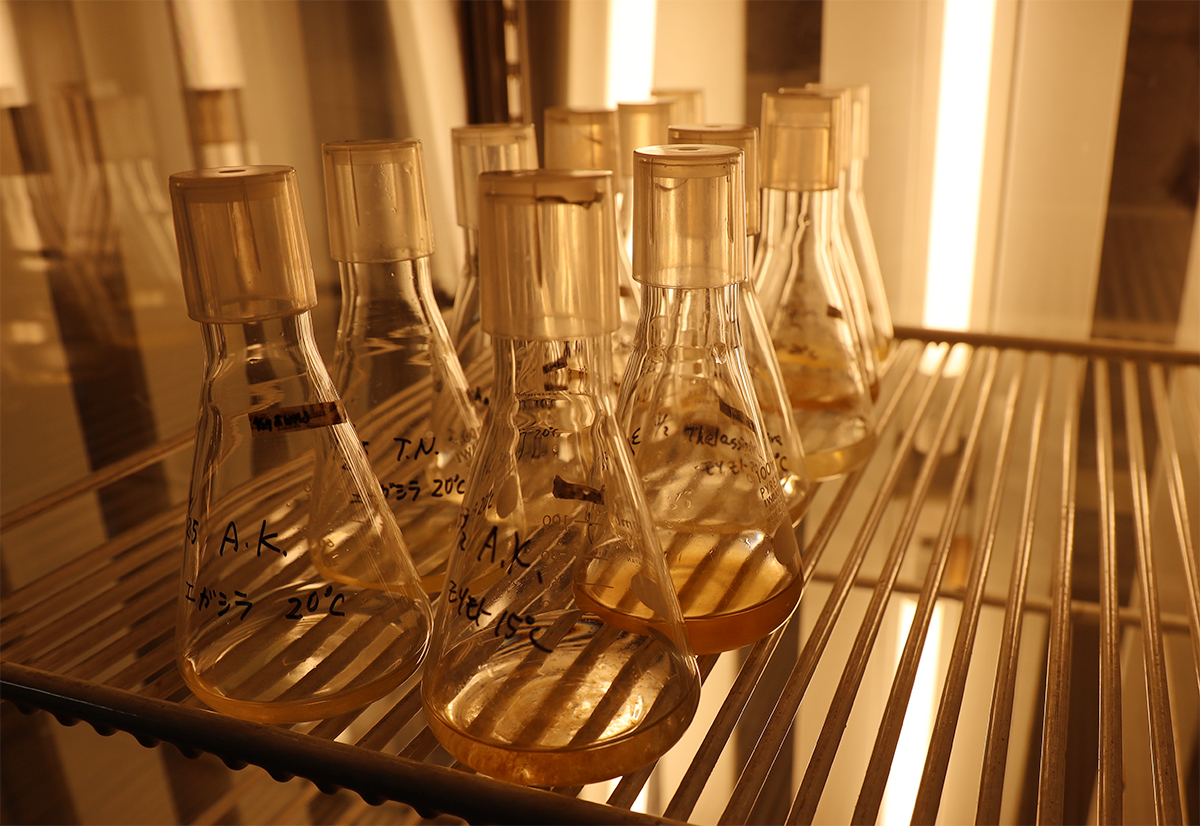
Marine phytoplankton being cultured in Matsuno's laboratory at the School of Fisheries Sciences (Photo: Sohail Keegan Pinto)
Realizing how small your world is
I have been interested in biology and environmental issues since I was in high school, but it wasn't until I entered the fisheries department at university that I became interested in marine plankton. For example, I was surprised to see a plankton that is less than a millimeter long but has 20 legs, and I guess you could call it 'biological beauty', a very reasonable and functional form. The forms of living organisms all have meaning. The more research I do, the more I realize that all forms of living organisms have meaning, which I really enjoy. At the same time, as a researcher, I want to take as neutral a view of things as possible and be a voice for plankton and nature.
Looking back on it now, I would like young people to get out and about. If you are interested in something, immerse yourself in it and actively communicate with seniors and researchers who are active in that field. This will make you feel closer to the world of experts, and conversely, you will realize how small your own world is. Through these experiences, I think you can also discover what you really like and what you want to do. Even if this is not connected to work, I think it will enrich your life.
The joys of fieldworkI like fieldwork-where I do research in the field. I enjoy the unexpected discoveries I make when I look at the plankton there, and the fact that these discoveries become the seeds for my next research project. But the preparation is hard work. Once you leave the port by boat, you have to make do with what you already have on board for two months, so I really think preparation is everything. Once we get there, we spend almost every waking moment sampling. That's part of the fun. In addition, researchers from many different fields live and work together on the ship, so many ideas are born from such interactions and joint research can begin. The oceans are connected all over the world, so we cannot have closed discussions. Researchers from different countries can also conduct research together and put data together to get a fuller picture. |
Written by Naoki Namba
Part of the special feature Understanding the Impact of Climate Change

